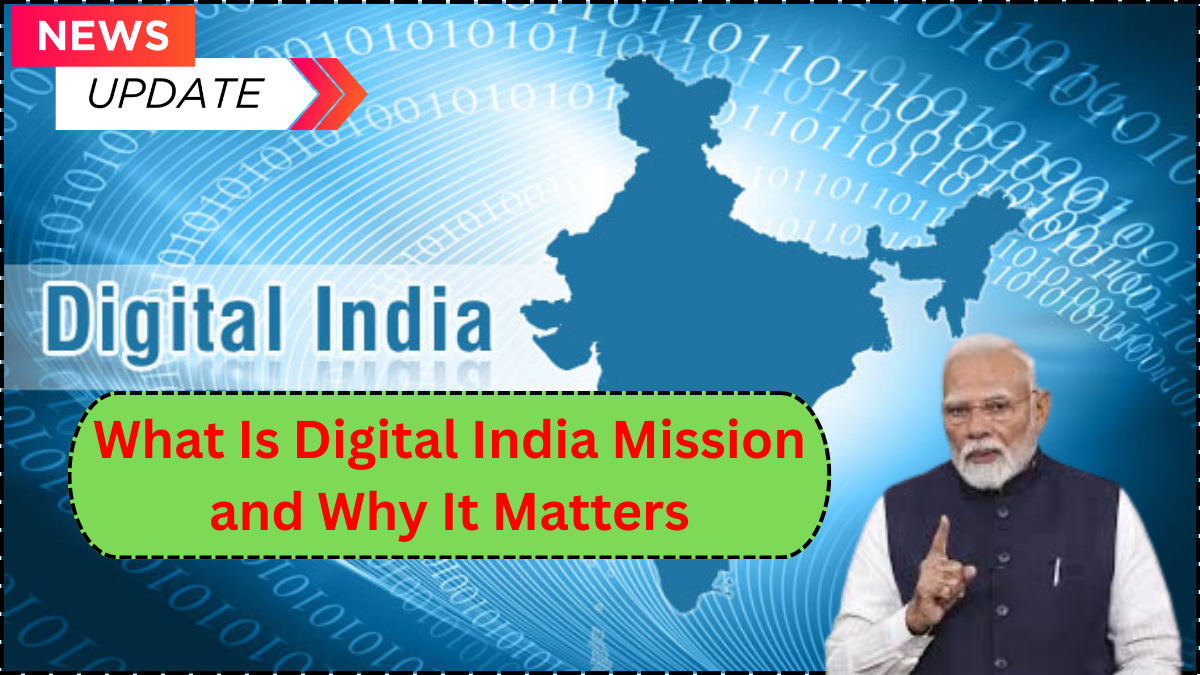Launched in July 2015, the Digital India Mission is a flagship initiative by the Government of India aimed at transforming the country into a digitally empowered society and knowledge economy. It represents a bold step towards integrating technology into governance, economy, and society at large. The mission envisions a connected future where every citizen has access to digital tools, services, and opportunities.

The Importance of Digital India Mission
The importance of the Digital India mission lies in its potential to bridge the digital divide and ensure inclusive growth. In a country where over 65% of the population resides in rural areas, providing digital access can significantly improve quality of life and economic opportunities.
By digitizing government services, improving digital literacy, and enhancing connectivity, the mission aims to:
- Enhance transparency and accountability in governance
- Facilitate better service delivery across sectors
- Empower citizens through access to information
- Promote economic development through digital entrepreneurship
The initiative is not just about technology adoption but about reshaping how services are delivered, making them more accessible, efficient, and citizen-centric.
Core Pillars and Digital India Goals
The Digital India mission is structured around nine key pillars that define its scope and impact:
- Broadband Highways: Expanding internet infrastructure across urban and rural India.
- Universal Access to Mobile Connectivity: Ensuring network coverage in underserved areas.
- Public Internet Access Programme: Creating Common Service Centers (CSCs) to provide internet access and services at the grassroots.
- e-Governance: Redesigning government processes through IT for better efficiency and service delivery.
- e-Kranti (Electronic Delivery of Services): Delivering services electronically in areas like health, education, agriculture, and justice.
- Information for All: Promoting transparency by providing open access to government data and information.
- Electronics Manufacturing: Boosting local electronics manufacturing to reduce import dependency.
- IT for Jobs: Training youth in IT skills to enhance employability.
- Early Harvest Programmes: Implementing short-term projects with immediate impact, such as biometric attendance systems in government offices.
Together, these pillars support the overarching Digital India goals of empowering citizens, strengthening infrastructure, and boosting economic activity.
Major Government Initiatives Under Digital India
Several transformative government initiatives have been rolled out under the Digital India umbrella:
- Aadhaar: The biometric-based digital identity system enables secure authentication and direct benefit transfers.
- DigiLocker: Offers citizens a cloud-based platform to store and access important documents.
- UMANG App: Unified Mobile Application for New-age Governance provides access to over 1200 government services.
- BHIM App: Facilitates seamless digital payments based on the Unified Payments Interface (UPI).
- National Optical Fibre Network (BharatNet): Lays the groundwork for high-speed internet in over 250,000 gram panchayats.
- MyGov Portal: Encourages citizen participation in policymaking and governance.
Each initiative is aimed at making digital resources accessible, improving governance, and fostering transparency.
Impact of the Digital India Mission
The Digital India Mission has triggered a digital revolution:
- Over 180 crore digital transactions are recorded monthly.
- More than 1.3 billion Aadhaar enrollments have been completed.
- Over 4 lakh CSCs operate across the country, providing services from banking to healthcare.
This transformation has improved ease of doing business, enhanced rural connectivity, and enabled real-time governance.
Challenges Ahead
Despite remarkable progress, the mission faces hurdles:
- Digital literacy remains low in many rural regions.
- Infrastructure gaps persist in remote areas.
- Cybersecurity and data privacy concerns are growing.
Addressing these issues is critical to ensuring that the benefits of digitization are universally felt and sustained.
FAQs About the Digital India Mission
Q1. What are the main objectives of the Digital India mission?
The mission aims to empower citizens through digital access, improve service delivery, promote transparency, and drive economic growth by integrating technology across sectors.
Q2. How does Digital India help in rural development?
By extending internet connectivity, offering digital services through CSCs, and promoting digital literacy, the mission empowers rural communities with new opportunities.
Q3. What are some key services available under Digital India?
Services include Aadhaar, DigiLocker, BHIM for payments, UMANG app for government services, and digital land records.
Q4. Is Digital India only about internet access?
No. It covers a wide range of goals including e-governance, digital empowerment, skill development, and boosting digital infrastructure.
Q5. Why is Digital India significant for the Indian economy?
It fosters innovation, promotes entrepreneurship, attracts investments in IT infrastructure, and helps integrate millions into the formal economy.
click here to know more